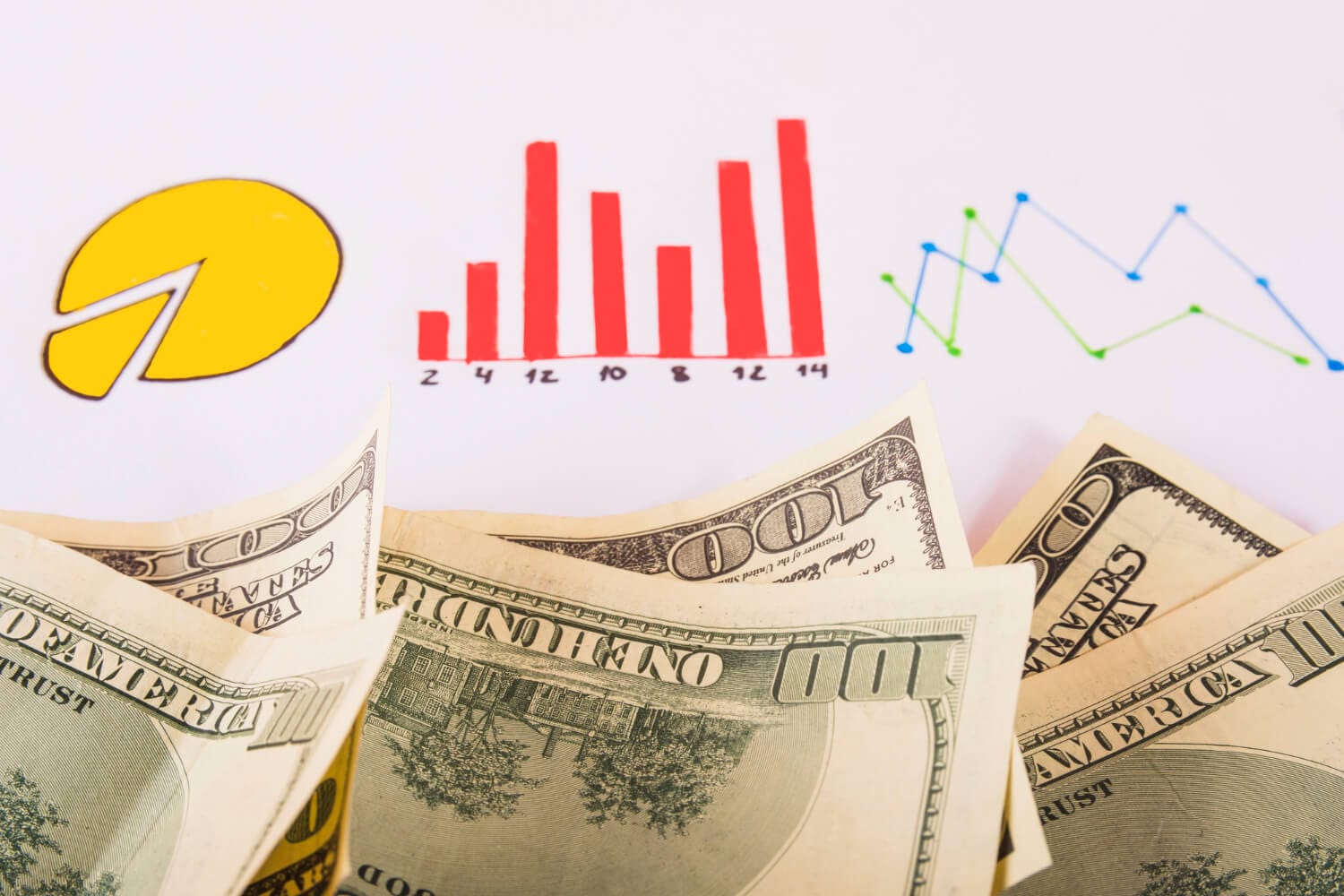![]()
The forex market, a global and decentralized financial powerhouse, stands as a testament to the interconnectedness of the modern world. Here, currencies from across the globe are bought and sold around the clock, making it the largest and most liquid financial market in existence. It operates without a centralized exchange, with trading occurring 24 hours a day, five days a week, in major financial hubs worldwide.
In the ever-evolving landscape of forex trading, analysis methods stand as the compass and the roadmap for traders navigating this complex terrain. The forex market is a realm of constant fluctuation, driven by a myriad of economic, financial, and geopolitical factors.
In such an environment, the ability to decipher market trends, anticipate currency movements ,and make informed decisions is not merely advantageous—it’s essential.
The purpose of this article is to embark on a comprehensive exploration of the analysis methods that serve as the bedrock of forex trading.
We will delve into four primary approaches:
- Fundamental Analysis
- Technical Analysis
- Sentiment Analysis
- Comparative Analysis.
Each method offers a unique perspective and toolkit for traders seeking to unravel the intricacies of the forex market.
I. Fundamental Analysis

1. Overview of Fundamental Analysis
Define fundamental analysis in forex: Fundamental analysis is a method used in forex trading to evaluate the intrinsic value of a currency by examining various economic, financial, and geopolitical factors that may influence its value. This analysis approach focuses on understanding the underlying forces that drive currency movements.
2. Pros of Fundamental Analysis
Economic Indicators
- Explain how economic indicators influence forex markets: Economic indicators, such as Gross Domestic Product (GDP), inflation rates, and employment figures, serve as vital metrics that reflect a country’s economic health. Movements in these indicators can significantly impact a nation’s currency value.
- Discuss the advantages of using economic indicators in analysis: Economic indicators provide traders with valuable insights into the economic performance of a country. By analyzing these indicators, traders can make informed decisions about potential currency movements.
News and Events
- Describe how major news events impact forex trading: News events, including central bank announcements, political developments, and economic crises, can trigger sudden and substantial movements in currency markets. These events often lead to increased volatility and trading opportunities.
- Discuss the timeliness of news-based analysis: News-based analysis is timely and can provide traders with real-time information that influences market sentiment. Traders who react swiftly to breaking news can capitalize on short-term price movements.
Long-Term Trends
Explain how fundamental analysis can help identify long-term trends: Fundamental analysis can provide valuable insights into the long-term prospects of a currency pair. Factors like interest rates, trade balances, and political stability can influence currency trends over extended periods.
3. Cons of Fundamental Analysis

Data Lag
- Discuss the delay in economic data release: Economic data is typically released on a scheduled basis, which creates a lag between when an economic event occurs and when the data becomes available. This lag can be a challenge for traders who require up-to-the-minute information.
- Explain how data revisions can affect trading decisions: Economic data is subject to revisions, which can lead to unexpected market reactions. Traders may initially respond to data releases only to find that subsequent revisions change the market’s interpretation.
Complex Factors
- Highlight the complexity of analyzing various economic factors: Fundamental analysis involves assessing a wide range of economic indicators, each with its own significance. Understanding how these indicators interplay and impact currency values requires in-depth knowledge and research.
- Mention challenges in interpreting news and events: News events can be subjective and open to interpretation. Traders must consider the broader context and potential biases in media reporting when making trading decisions.
Subjectivity
- Discuss how different analysts may interpret the same data differently: Fundamental analysis often involves subjective judgments about the significance of economic and geopolitical events. Different analysts may have varying interpretations of the same data.
- Highlight the potential for bias in fundamental analysis: Traders and analysts may have preconceived notions or biases that influence their interpretations of fundamental data. These biases can impact trading decisions and introduce subjectivity into the analysis process.
In this section on fundamental analysis, you’ve provided a detailed exploration of the method. The pros and cons offer a balanced view of the strengths and weaknesses of fundamental analysis in forex trading. This information equips traders with a comprehensive understanding of the factors they should consider when applying fundamental analysis to their trading strategies.
II. Technical Analysis

1. Overview of Technical Analysis
Define technical analysis in forex: Technical analysis is a method used in forex trading that involves analyzing historical price data and volume to predict future price movements. Traders who use technical analysis rely on charts, patterns, and various technical indicators to make trading decisions.
2. Pros of Technical Analysis
Historical Price Data
- Explain how historical price data is used in technical analysis: Traders use historical price data to identify patterns and trends in currency pairs. They analyze price charts to find historical support and resistance levels, chart patterns like head and shoulders, and other technical signals.
- Discuss the benefits of using historical charts and patterns: Historical data provides traders with valuable information about past price movements, which can help in predicting potential future price movements. Chart patterns and trend analysis can assist traders in making informed decisions.
Clear Entry and Exit Points
- Describe how technical analysis can provide precise entry and exit points: Technical analysis enables traders to pinpoint specific levels at which to enter or exit trades. Support and resistance levels, as well as various technical indicators, help traders set clear trading strategies.
- Discuss the importance of risk management: Technical analysis goes hand in hand with risk management. It allows traders to establish stop-loss orders and profit targets based on technical levels, helping to manage risk effectively.
Short-Term Trading
Explain how technical analysis suits short-term traders: Technical analysis is particularly well-suited for short-term traders who aim to profit from price fluctuations over relatively brief periods. Short-term traders often use intraday charts and technical indicators to make quick trading decisions.
3. Cons of Technical Analysis

Limited Predictive Power
- Discuss the criticism that technical analysis lacks predictive power: Critics argue that technical analysis is limited in its ability to predict future price movements accurately. Some believe that it primarily relies on historical data, which may not always reflect changing market conditions.
- Highlight the challenges of relying solely on past price data: Relying solely on past price data can be problematic, as it may not account for unexpected events or fundamental shifts in the market.
Emotional Bias
- Explain how emotional bias can influence technical analysis: Emotional biases, such as overconfidence or fear, can lead traders to misinterpret technical signals or make impulsive decisions.
- Discuss the role of self-fulfilling prophecies in chart patterns: Some traders argue that certain chart patterns work because they become self-fulfilling prophecies. Traders act on these patterns because they believe others will do the same, reinforcing the pattern’s validity.
Overcrowding
- Mention the risk of overcrowding in popular technical indicators: When too many traders rely on the same technical indicators or patterns, markets can become overcrowded. This can lead to increased volatility and potential whipsaw movements.
- Discuss the potential for false signals in crowded markets: Overcrowded markets are susceptible to false signals, where a technical indicator or pattern appears to signal a move, but it fails to materialize as expected. Traders must be cautious in such situations.
In this section on technical analysis, you’ve provided a comprehensive exploration of the method, its strengths, and its weaknesses. The pros and cons offer readers a balanced view of the benefits and challenges associated with technical analysis in forex trading. This information equips traders with a deeper understanding of how to effectively use technical analysis in their trading strategies while being mindful of its limitations.
III. Sentiment Analysis

1. Overview of Sentiment Analysis
Define sentiment analysis in forex: Sentiment analysis in forex involves assessing and gauging the overall market sentiment or mood of traders and investors. It aims to understand how emotions and opinions can influence trading decisions and, consequently, currency prices.
2. Pros of Sentiment Analysis
Market Psychology
- Explain how sentiment analysis captures market psychology: Sentiment analysis delves into the collective psychology of market participants. It looks at factors like fear, greed, and market sentiment to gauge how these emotions might affect trading decisions.
- Discuss the value of contrarian trading based on sentiment: Contrarian traders often go against prevailing market sentiment. When sentiment becomes excessively bullish or bearish, contrarian traders may take the opposing view, as extreme sentiment can signal potential market reversals.
Leading Indicators
- Describe how sentiment indicators can act as leading indicators: Sentiment indicators, such as the CBOE Volatility Index (VIX) or the Put/Call Ratio, can provide early signals of market shifts. When sentiment diverges from market trends, it may indicate an impending reversal.
- Discuss their relevance in predicting market reversals: These indicators can be useful for traders looking to anticipate market reversals before they become evident in price movements.
Real-Time Data
Highlight the advantage of real-time sentiment data: Sentiment analysis often relies on real-time data sources, including social media, news sentiment, and market sentiment indicators. This real-time information can provide traders with up-to-the-minute insights into market sentiment.
3. Cons of Sentiment Analysis

Noise in Data
- Discuss the challenge of distinguishing noise from meaningful sentiment: Sentiment analysis can be challenging because it involves sifting through vast amounts of data from various sources, including social media and news. Not all sentiment data are relevant or accurate.
- Explain how sudden news events can disrupt sentiment: Unexpected news events can quickly alter market sentiment. Traders must be cautious when relying on sentiment analysis during times of high volatility or breaking news.
Lack of Precision
- Mention the subjective nature of sentiment analysis: Sentiment analysis often involves interpreting text or data subjectively. What one analyst interprets as bullish sentiment, another may view differently.
- Discuss the difficulty in quantifying sentiment accurately: Assigning precise numerical values to sentiment can be challenging. Different sentiment analysis tools and algorithms may produce varying results.
Contrarian Risk
- Explain the risk of going against prevailing sentiment: Contrarian trading based on sentiment carries inherent risks. Sentiment can remain irrational for extended periods, and attempting to trade against prevailing sentiment can lead to losses.
- Discuss how sentiment can remain irrational for extended periods: Markets can be influenced by sentiment longer than one might expect. Sentiment-driven trends can persist despite fundamental factors suggesting otherwise.
In this section on sentiment analysis, you’ve provided a thorough examination of the method, its advantages, and its drawbacks. The pros and cons offer readers a well-rounded understanding of how sentiment analysis can be a valuable tool for forex traders while also highlighting the potential challenges and limitations associated with relying solely on sentiment-based strategies. This information equips traders with the knowledge to incorporate sentiment analysis effectively into their trading decisions.
IV. Comparative Analysis

1. Overview of Comparative Analysis
Define comparative analysis and its role in forex trading: Comparative analysis in forex trading involves evaluating multiple analysis methods or approaches to make well-informed trading decisions. Traders compare the strengths and weaknesses of different methods to create a more comprehensive trading strategy.
2. Pros of Comparative Analysis
Diversification
- Explain how comparative analysis allows for diversification: Comparative analysis encourages traders to diversify their trading strategies by incorporating multiple analysis methods. This diversification spreads risk across different approaches.
- Discuss the potential for risk reduction: Diversification through comparative analysis can lead to risk reduction. When one method underperforms, others may compensate, reducing overall portfolio risk.
Risk-Return Assessment
- Describe how comparative analysis helps assess risk-return profiles: Comparative analysis allows traders to evaluate the risk and potential return of different trading strategies. By comparing historical performance, traders can make more informed decisions.
- Discuss its use in building balanced portfolios: Traders can use comparative analysis to build balanced portfolios that align with their risk tolerance and investment goals. For example, they may allocate a portion of their capital to short-term trading and another portion to long-term investing based on the results of their analysis.
Combining Methods
Highlight the flexibility of using multiple analysis methods: Comparative analysis offers flexibility by allowing traders to combine and adapt various methods to suit changing market conditions. For example, traders might use fundamental analysis for long-term trends and technical analysis for short-term entries and exits.
3. Cons of Comparative Analysis

Complexity
- Discuss the added complexity of integrating different methods: Comparative analysis can be complex due to the need to integrate and coordinate multiple analysis approaches. Traders must understand the intricacies of each method.
- Explain the need for expertise in each analysis approach: To effectively apply comparative analysis, traders need expertise in each analysis method they incorporate. This requirement can be demanding and time-consuming.
Resource-Intensive
- Mention the resource and time demands of comparative analysis: Managing and applying multiple analysis methods can be resource-intensive. It may require access to various data sources, software, and continuous monitoring.
- Discuss the challenge of staying updated on multiple fronts: Traders utilizing comparative analysis must stay informed about developments in each analysis approach they use. This ongoing commitment can be demanding.
No Guarantees

- Emphasize that even with comparative analysis, there are no guarantees in forex trading: Comparative analysis can enhance decision-making, but it does not eliminate the inherent risks of forex trading. There are no foolproof strategies, and traders must be prepared for losses.
- Discuss the importance of ongoing monitoring and adaptation: Even with comparative analysis, market conditions can change rapidly. Traders must continuously monitor their strategies and adapt them as needed to remain effective.
In this section on comparative analysis, you’ve provided an in-depth examination of the method, its benefits, and its challenges. The pros and cons offer readers a comprehensive understanding of how comparative analysis can be a valuable approach for forex traders seeking to optimize their strategies. This information equips traders with the knowledge to effectively incorporate comparative analysis into their trading decisions while being aware of the complexities and uncertainties associated with multiple analysis methods.
Conclusion
![]()
In our exploration of different analysis methods in forex trading, we’ve uncovered valuable insights into each approach.
- Fundamental analysis rooted in economic and financial factors, provides a deep understanding of a currency’s intrinsic value. Its reliance on economic indicators and news events allows traders to grasp the broader economic landscape.
- Technical analysis focusing on historical price data and patterns, offers precise entry and exit points for traders. It suits short-term strategies and promotes risk management.
- Sentiment analysis delves into market psychology and real-time data, making it a powerful tool. It’s particularly useful for contrarian traders and assessing market sentiment.
- Comparative analysis offers the advantage of diversification, risk-return assessment, and flexibility. It allows traders to combine various methods to create balanced portfolios.
It’s crucial to recognize that there’s no one-size-fits-all approach in forex trading. Traders must understand their unique trading styles and risk tolerance. Forex is a dynamic and ever-changing market, requiring continuous learning and adaptation. Regardless of the method chosen, staying informed and agile is paramount for success. In this dynamic environment, knowledge, discipline, and adaptability remain the most potent currencies in your trading arsenal.
Don’t trade all the time, trade forex only at the confirmed trade setups.
Get more confirmed trade setups here: forexgdp.com/buy/
